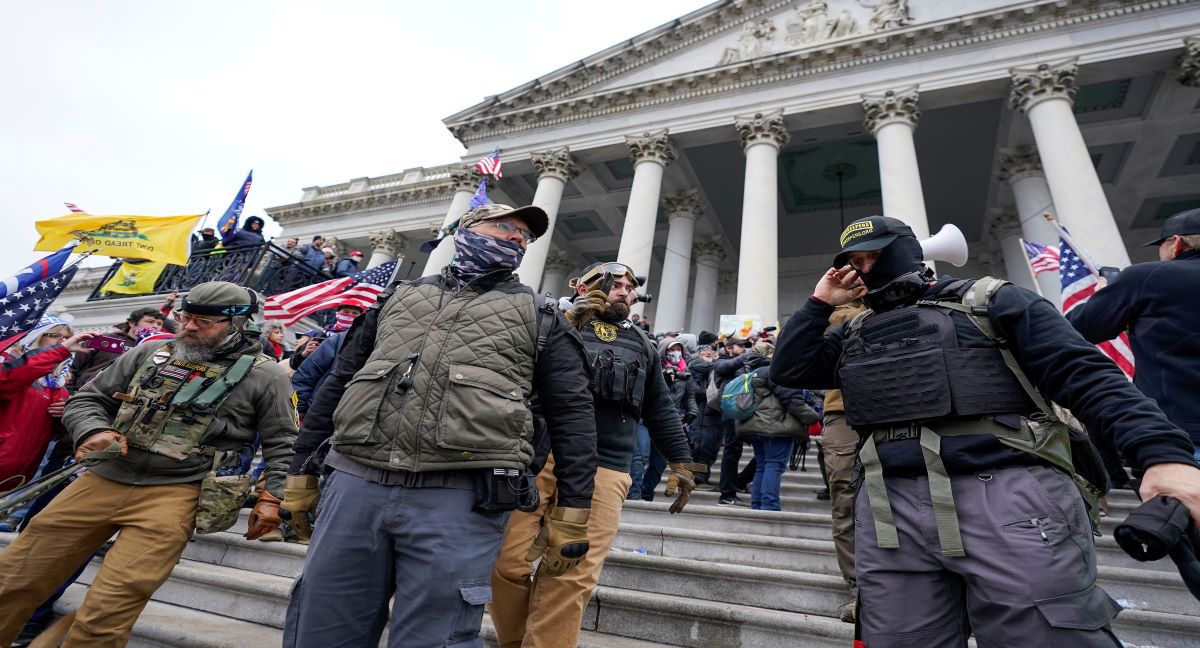The Pentagon is still working on getting an idea of just how common extremist activity and affiliations are among service members. Total complaints have numbered in the hundreds over the past few years, but experts warn that even low prevalence still poses a risk, given the military’s unique position.
They also caution against dismissing efforts to address extremism because of the small number of cases investigated each year.
“I think we need to remember the difference between, ‘This is a wholesale problem,’ versus, ‘This is an issue,’ right?” Seamus Hughes, deputy director of George Washington University’s Program on Extremism, said. “Those two things can be true at the same time, right? This is not a wholesale problem, but there is an issue.”
Republican lawmakers in recent months have argued that the low incidence of extremism reports in the military suggests that it’s not worth confronting, calling on the Pentagon to drop its anti-extremism screening and education efforts.
By the numbers, the services reviewed 211 reports in fiscal year 2022. Half of those were referred to civilian law enforcement, and another quarter were handled by military judicial or administrative action.
So, while the actual numbers are low among a force of more than a million active duty troops, experts have argued that service members and veterans involved in extremist groups pose a disproportionate security risk for multiple reasons. First, their training and knowledge makes them more capable of carrying out attacks. Secondly, their experience is coveted by extremist groups looking for credibility. And finally, their participation is detrimental to the public’s view of the military.
According to the 2022 Reagan National Defense Survey, roughly half of respondents said “extremist or right-wing affiliations” of service members contributed to their low trust and confidence in the military as an institution.
RELATED
:quality(70)/cloudfront-us-east-1.images.arcpublishing.com/archetype/KTUJKBTSEFANHINM2DHIC4RS34.jpg)
“If you look at the last few months you’ve got an arrested [former] Marine officer planning to attack synagogues,” Hughes said. “You had an individual in Fort Bragg dropped out of the military for support for white supremacy. You had another Marine in Hawaii who was planning a series of attacks there. So again, this is not to say that this is a overwhelming problem, but it is a concern. And I think we need to address the problem in same exact way.”
A CNAS report published Tuesday included some recommendations for the Defense Department. Chief among them is standardizing how the services monitor social media for service members espousing extremist rhetoric, which is prohibited by department policy.
“The DoD and military services should consider adapting criteria for social media screening, including standards for acceptable professional behavior while in uniform,” the report suggested.
Other recommendations emphasize ongoing training and education, starting at the recruit level.
“Conversations with potential recruits should focus on the role of military service within the social contract prior to administration of the oath of office,” the report reads.
And in the course of a career, professional military education should reiterate a service member’s role in society and the standards they are obliged to uphold.
“The academic environment of PME allows for freer discussion regarding the applicability of military ethics to ambiguous or difficult leadership challenges, and this can motivate service members to pursue behavioral change in themselves and their units,” the report recommends.
Ongoing Pentagon efforts include updated screening questions for recruits, though they stop short of reviewing social media, as well as improving education for transitioning service members about being targeted by extremist groups once separated.
RELATED
:quality(70)/cloudfront-us-east-1.images.arcpublishing.com/archetype/JM6YOPID2ND7PI43KVC5CH4SCA.jpg)
One of the military’s biggest challenges has been gathering accurate data on the prevalence of extremism. Although the Defense Department tallied 211 cases of domestic extremism between October 2021 and September 2022, an inspector general report released Thursday found that the services’ use of multiple databases and non-standardized language to describe reports hampered efforts to gather a complete picture and compare apples to apples.
“For example, the Department of the Army stated that its current use of several separate databases made it difficult to track total allegations if the allegation did not have a follow-on status of investigation, inquiry, or referral,” the report found. “Therefore, the Army’s total allegation data does not reflect its total number of allegations, just the total number of allegations with a follow-on status.”
Meghann Myers is the Pentagon bureau chief at Military Times. She covers operations, policy, personnel, leadership and other issues affecting service members.

